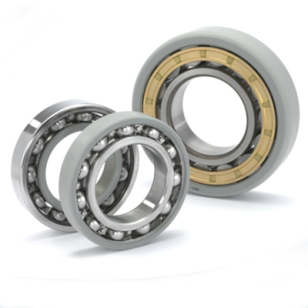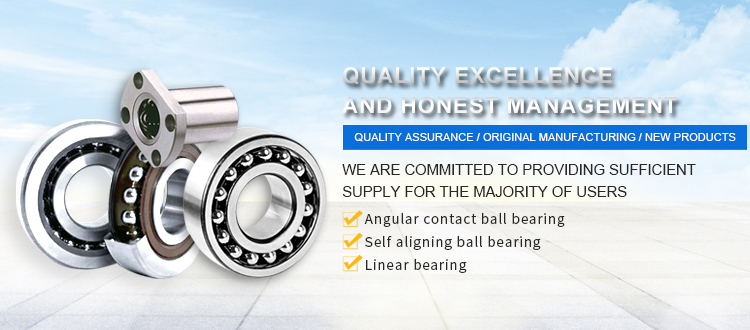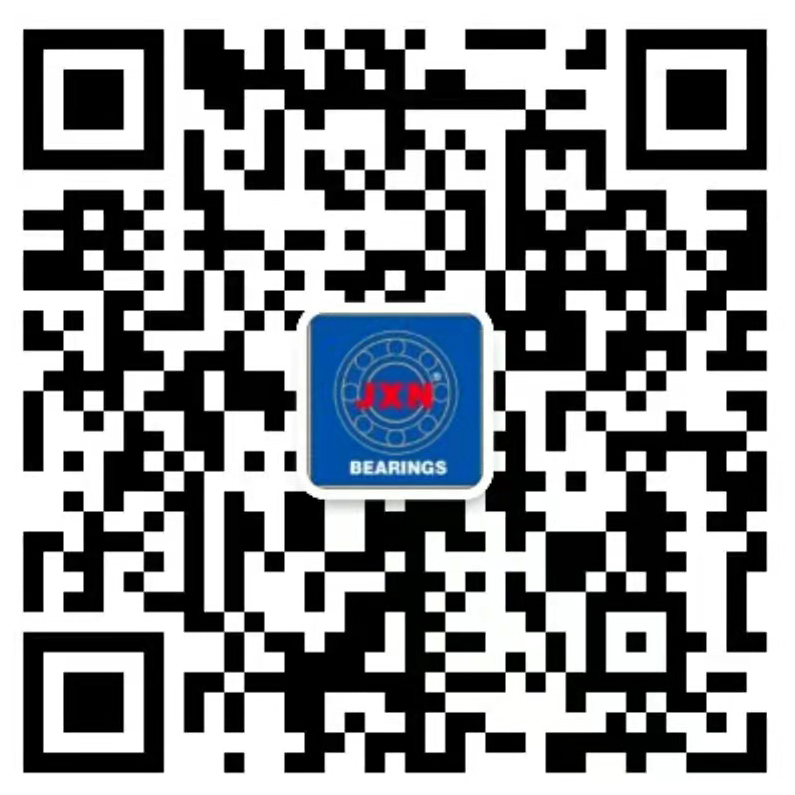
The electric insulated bearing adopts special spraying process, and high-quality coating is sprayed on the outer surface of the bearing. The coating has strong adhesion with the substrate and good insulation performance, which can avoid the electric corrosion of the induced current on the bearing, prevent the damage of the current to the lubricating grease, rolling body and raceway, and improve the service life of the bearing. The process is constantly improved. In insulated bearings, there is a layer of 100 on the surface of the outer ring or inner ring μ M thick coating, capable of withstanding voltages up to 1000 V DC. The special spraying process can form a coating with uniform thickness and strong adhesion, which can be further treated to prevent it from being affected by moisture and humidity.
1. Purpose and scope of inspection
In order to ensure the insulation performance, it is necessary to measure the insulation of the insulated bearing, including the insulation resistance, shaft voltage and shaft current of the bearing. The purpose of measuring the motor shaft voltage is to understand the motor shaft current; The purpose of measuring the motor shaft current is to directly obtain the value of the current flowing through the motor bearing.
Because the damage of shaft current mainly occurs in motors powered by variable frequency power supply with frame number of 280 and above and ordinary large and medium-sized high-voltage motors. Therefore, this inspection is generally only carried out for the first trial production of these types of motors or for the improvement of the design of some motors whose shaft current has a serious impact on the bearing.
2. Measurement of insulation resistance of insulated bearing
When measuring, the bearing can be measured separately, but it is better to carry out after installing the bearing on the rotating shaft. Generally, 250V insulation resistance meter is selected. Connect the e end of the instrument with the rotating shaft; After the insulating part of the bearing (such as outer ring) is covered with aluminum foil, bind and fix the aluminum foil with bare copper wire, and then connect it with the l-end of the instrument; Or install the insulated bearing into the bearing housing of the bearing seat or motor end cover, and measure the insulation resistance between the shaft and the bearing seat or motor end cover when there is no electrical path between the bearing seat or motor end cover and the rotating shaft on which the insulated bearing is installed. The measurement operation is exactly the same as that of measuring the insulation resistance of motor and winding to ground.
3. Measurement method of bearing current
For motors using rolling bearings, the shaft current shall be measured according to figure 1. Install an insulating ring between the bearing at the non shaft extension end of the motor and the casing (dry insulating sheet is padded between the bearing and the rotating shaft) or use an insulating bearing to ensure good insulation of the motor bearing.
Fig. 1 measurement method of bearing current
Connect the ammeter in series to the metal parts in contact with both sides of the bearing insulation layer, operate under no-load at rated voltage and rated frequency, and measure the current value, i.e. shaft current.
If the motor using sliding bearing and rolling bearing cannot be measured according to the above method, the shaft current can be measured by placing current transformer on the shaft.
Product classification
Electrically insulated deep groove ball bearing
Electrically insulated angular contact ball bearing
Electrically insulated cylindrical roller bearing
Inner or outer ring insulated bearing with oxide coating
Hybrid bearing with electrically insulated ceramic rolling element
Dimension range editing
1. Electrically insulated deep groove ball bearing
Inner diameter range: 40mm ~ 140mm
Outer diameter range: 80mm ~ 300mm
Width dimension range: 18mm ~ 62mm
2. Electrically insulated angular contact ball bearing
Inner diameter range: 40mm ~ 140mm
Outer diameter range: 80mm ~ 300mm
Dimension range: 62mm ~ 18mm
3. Electrically insulated cylindrical roller bearing
Inner diameter range: 45mm ~ 140mm
Outer diameter range: 100mm ~ 300mm
Width dimension range: 25mm ~ 62mm
Merit editing
Electrically insulated bearings can avoid the damage caused by electric corrosion. Therefore, compared with ordinary bearings, they can ensure more reliable operation in motors. Compared with other insulation methods, such as shaft or shell insulation, it is more cost-effective and reliable. The overall dimensions and basic technical characteristics of insulated bearings are the same as those of non insulated bearings, so they can be 100% interchangeable. It is applicable to motors and generators, especially variable frequency motors.
Application of insulated bearing in motor
1. Causes and hazards of the formation of motor shaft voltage and bearing current
During the operation of the motor, any imbalance in the magnetic circuit of the stator and rotor or the phase current around the shaft can produce the flux linkage of the rotating system. When the shaft rotates, these magnetic chains can produce a potential difference at both ends of the shaft, which is called shaft voltage. The shaft voltage can excite the circulating current in the loop (closed circuit) formed by the shaft and the casing through the bearings at both ends. This current is called the shaft current. As shown in Figure 2.
Fig. 2 shaft current
In addition, there is much remanence in the rotor core. For wound rotor motor, if there is a short circuit between two or more windings to the rotor core or rotating shaft, shaft voltage and shaft current will also be generated.
The magnitude of bearing current is related to the motor structure, motor power, amplitude of driving voltage, pulse rise time, cable length and other factors. The greater the power of the motor, the higher the driving voltage, the steeper the rising edge of the driving voltage and the shorter the cable, the greater the bearing current.
2. Measures to block shaft current - use insulated bearings
In order to avoid the burning damage of shaft current to the bearing, effective measures should be taken to isolate the shaft current.
For large motors with independent bearing seats at both ends, isolation gaskets made of insulating materials can be placed between the bearing seat and the metal base. For ordinary motors with bearings and casings assembled as a whole, insulated bearings are generally used at one end (often arranged at the non spindle extension end). For occasions with high requirements, insulated bearings are installed at both ends. The insulating bearing used is generally the method of adding (generally coating) insulating layer to the outer ring. In some cases, the insulating layer will be added to both the inner and outer rings, as shown in Figure 3.










